The Upper Midwest is dotted with depressions which collect water from rainfall and snowmelt. Varying in size, depth and weather conditions, some may dry up rather quickly while others may be relatively permanent. All serve as important foraging sites for waterfowl and the larger ones are major breeding sites, comprising "...one of the most important wetland regions in the world. The area is home to more than 50 percent of North American waterfowl." [Ref: Prairie Potholes US Environmental Protection Agency]
At Nelson Lake Marsh/Dick Young Kane County Forest Preserve near our second home in NE Illinois, there is a nice example of a pothole which holds water the year around, surrounded by marshes. Ducks, geese and Sandhill Cranes have raised their broods here. Red-winged Blackbirds, Marsh Wrens and Swamp Sparrows reside in the wetlands:

A Double-crested Cormorant perches on a Muskrat lodge:

Before the land around our condominium was developed, one small pothole served as a permanent residence for a family of Muskrats and attracted migrating geese, ducks and sandpipers.
The view from our front porch in May, 2011:

We were delighted when a Snow Goose showed up:

Among our breeding "yard birds" were Spotted Sandpipers (May, 2012):
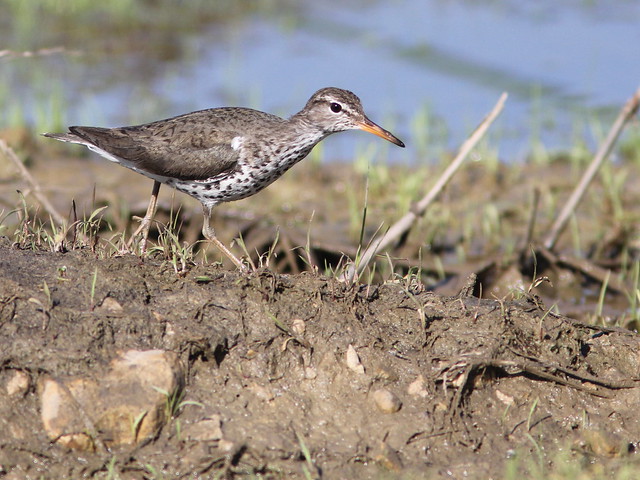
Potholes were produced by the weight of glacial ice some 10,000 years ago. Many of the original potholes were filled and drained as areas were developed for agricultural or commercial purposes. Yet some remnants persist even in cultivated fields as evanescent shallow flood puddles ("fluddles") which attract migrating sandpipers and plovers. Other man-made retention ponds capture urban rainwater and serve as surrigate "potholes."
This past week our local Kane County Audubon Society sponsored a "ramble" to one such retention pond, on the grounds of the James O Breen Community Park in St. Charles.
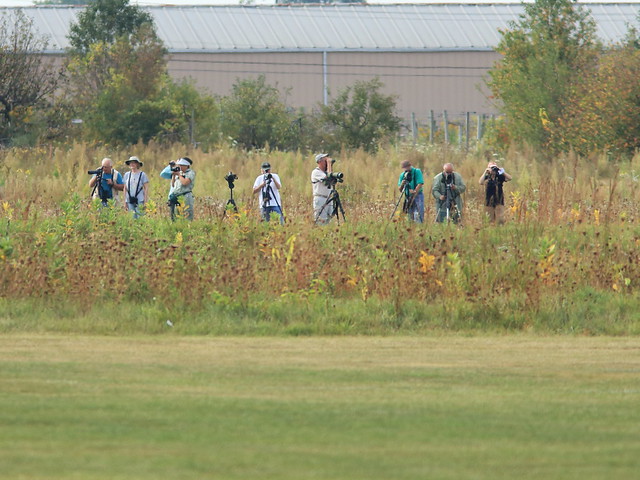
August and September have been unusually dry, and water levels have decreased to the point of threatening the pond's fish population. Large carp are surfacing to gasp for air, to the delight of Ospreys. Mud flats along the shore have attracted large numbers of sandpipers.
Lesser Yellowlegs predominated:
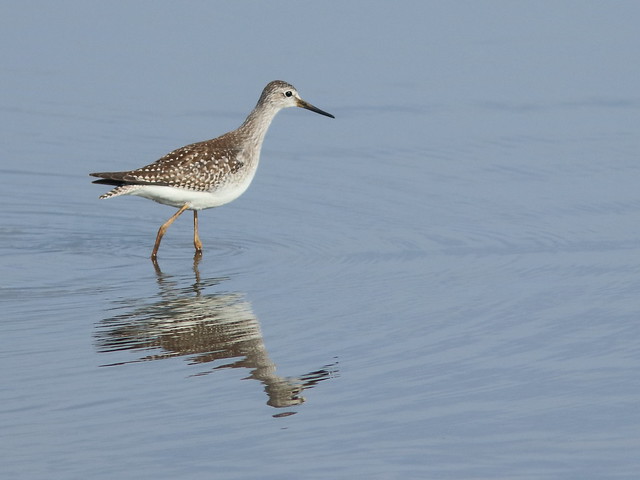
I counted nine Stilt Sandpipers:
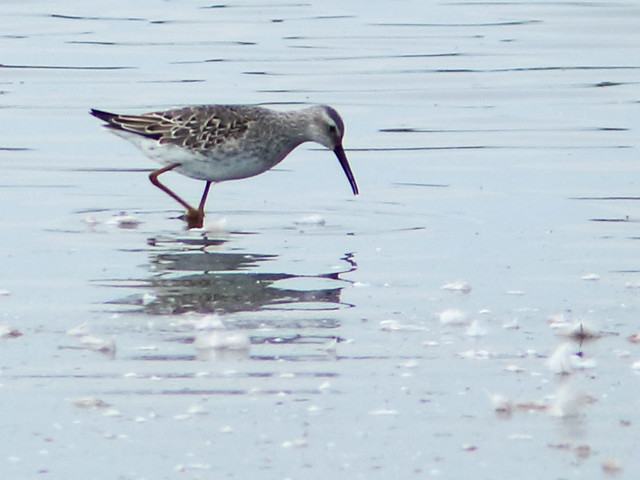
A small and short-legged Baird's Sandpiper foraged among the Killdeer:
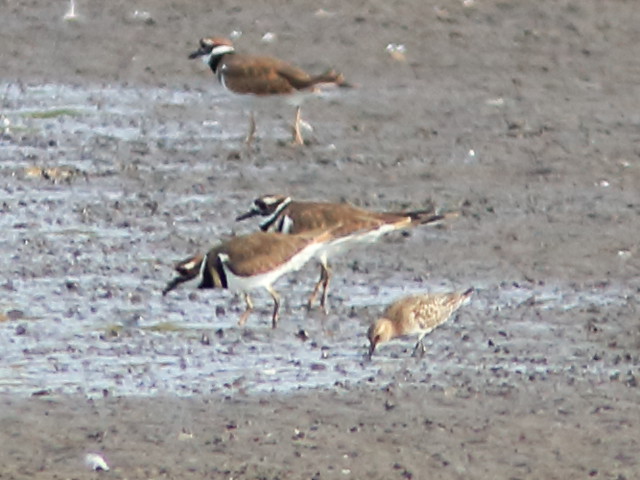
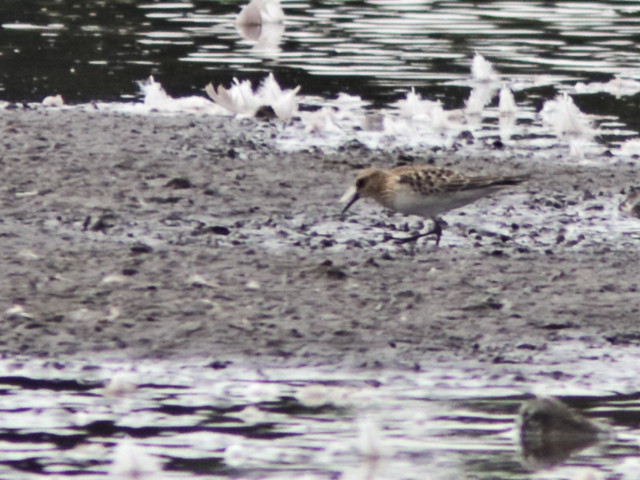
Two beautiful Buff-breasted Sandpipers provided excellent views:
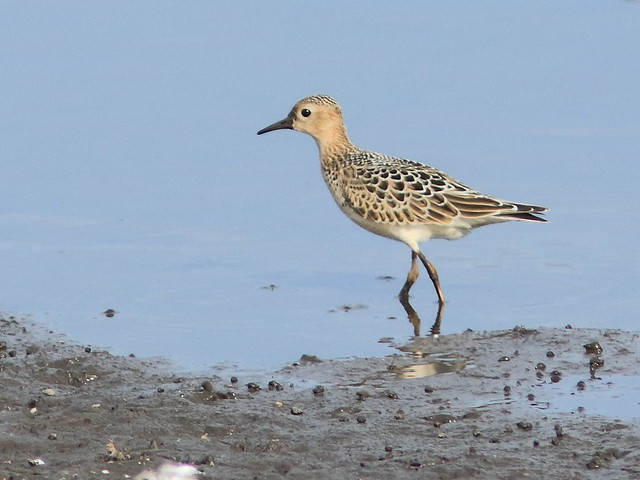
A Wilson's Snipe rested on the mudflat:

An immature Red-tailed Hawk oversaw the action from atop a goal post, but seemed to pose no threat:
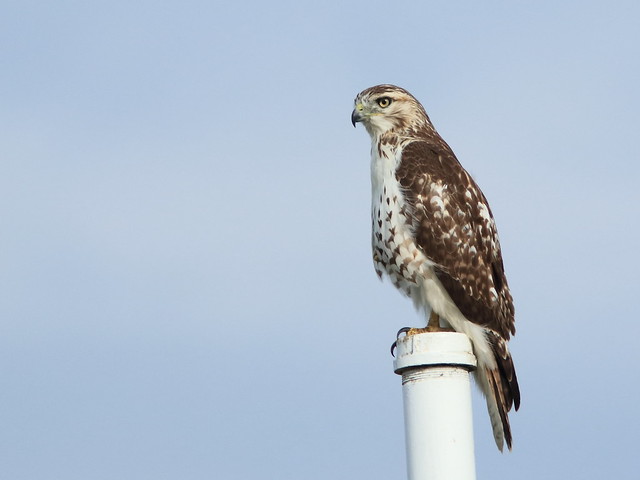
The Community Park is part of a complex managed by the St Charles Park District which includes athletic fields, community vegetable gardens, an aquatic park, picnic areas and the Hickory Knolls Discovery Center with an adjacent natural area.
Community Gardens with idle pasture in foreground:

Autumn color at Hickory Knolls:
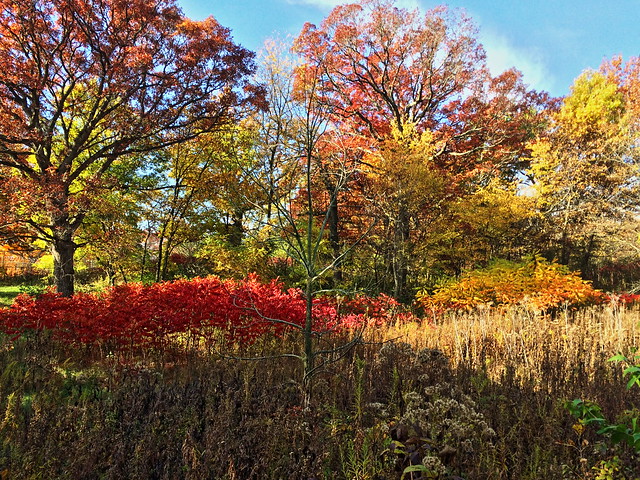
Nature trail:

= = = = = = = = = = = = = = =
Linking to Misty's CAMERA CRITTERS,
Linking to Eileen's SATURDAY'S CRITTERS,
Linking to FENCES AROUND THE WORLD by Gosia
Linking to SKYWATCH FRIDAY by Yogi, Sylvia and Sandy
Linking to WEEKEND REFLECTIONS by James
Linking to BirdD'Pot by Anni
Linking to Wild Bird Wednesday by Stewart
Linking to Wordless Wednesday (on Tuesday) by NC Sue
Linking to ALL SEASONS by Jesh
________________________________________________
Please visit the links to all these memes to see some excellent photos on display
________________________________________________
We returned to Florida from Illinois on August 5, flew to Amarillo only six days later, then on to Corpus Christi, Texas on August 16 and returned to Florida on August 20. Hurricane Harvey struck Corpus Christi on August 26. As Hurricane Irma approached our Florida home we escaped to New Mexico on September 6, came back to Florida on September 12, then departed for Illinois on September 16. This adds up to seven flights over a six week period.
A pre-dawn view of cruise ships in Port Everglades as we took off from the Fort Lauderdale-Hollywood International Airport (the airplane cabin was dark but my iPad turned on and caused a reflection):

In betwen trips we enjoyed a few rain-free days which allowed us to go birding in our local Florida wetlands. This was the scene just 5 minutes after sunrise on August 9:
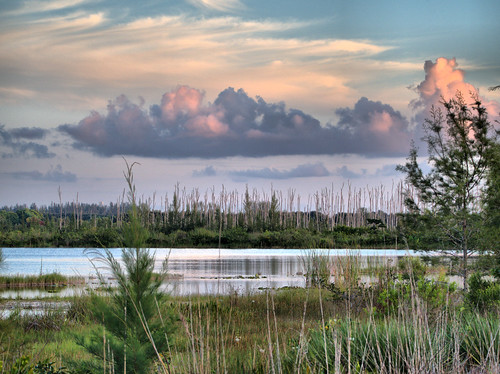
Int the flooded woodlands, Melaleucas and Australian Pines had wet feet and cast weird reflectons:
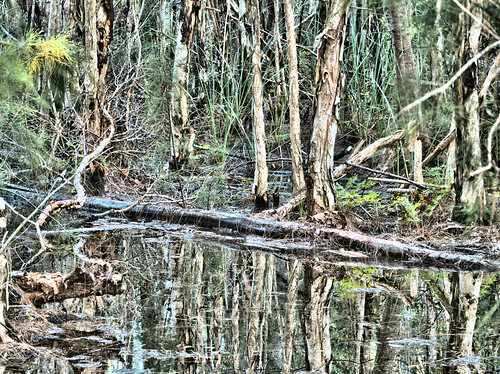
The herons in the rookery had raised their broods and most abandoned the site. Among the stragglers were an adult Yellow-crowned Night-Heron:
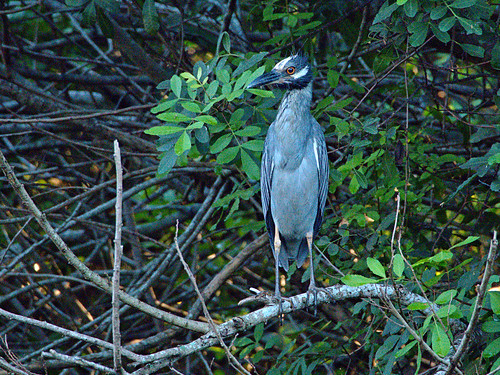
It posed for a portrait, demonstrating its binocular vision:

A well-hidden juvenile Yellow-crowned Night-Heron:

I captured this photo of a Great Egret preening its feathers through a hole between the branches. This produced a natural vignette:
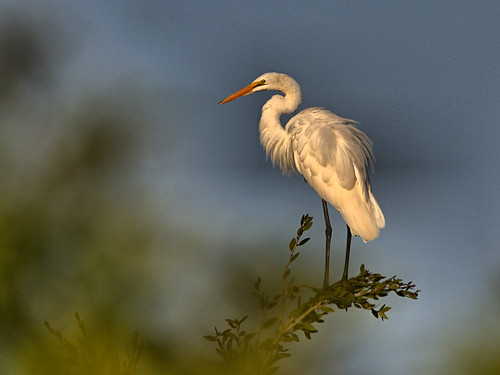
The appearance of a Northern Waterthrush was a sign that land bird migration was underway:
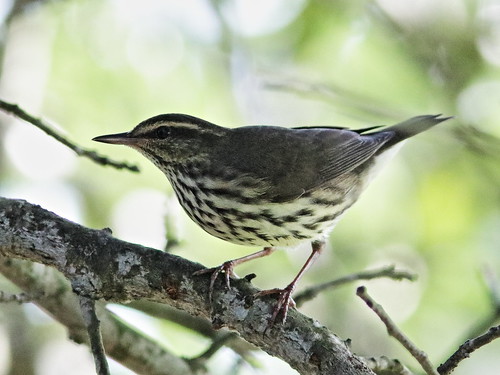
Northern Parula warblers are early migrants:
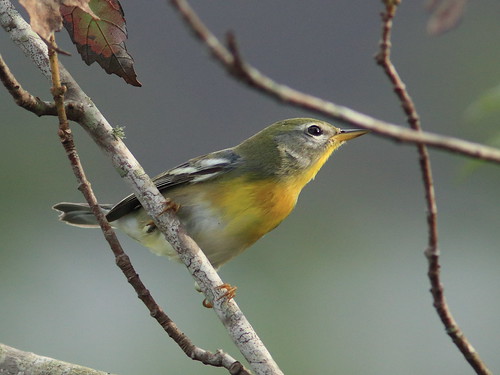
Last year we had a tiny Alder Flycatcher stay well into autumn. Perhaps this is the same one, as it appeared in the same fruiting Trema tree. Since it is best distinguished from the nearly identical Willow Flycatcher by its call, I must wait to hear it to be sure of my identification. However its olive plumage and its habit of foraging along the branches like a vireo appear more consistent with an Alder Flycatcher:
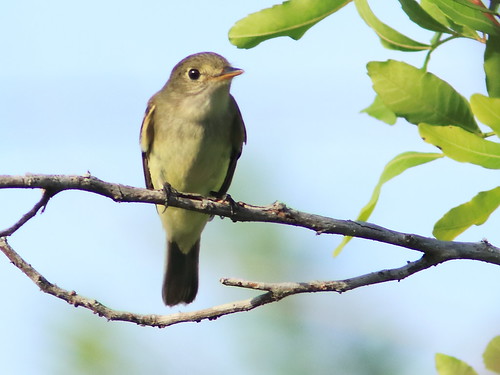
Blue-gray Gnatcatchers may breed down into southern Florida, but I have never seen them during summer until late August:
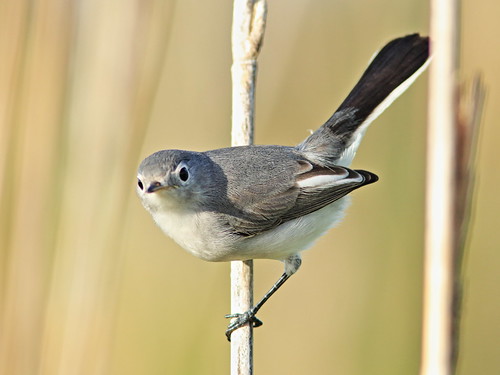
Northern Cardinals are present year around. This is a female:
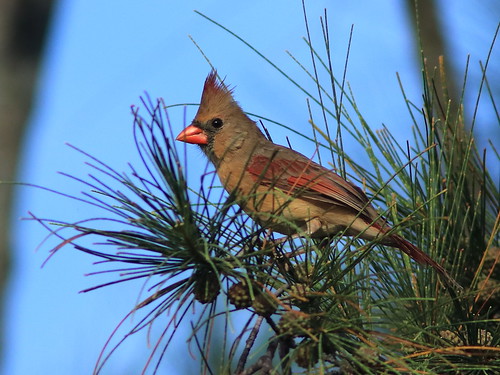
Prairie Warblers breed locally but their numbers are augmented by arrivals from the north:

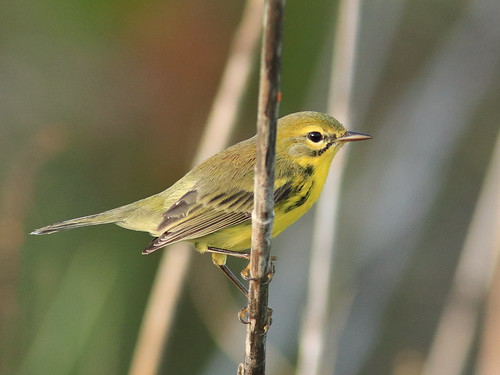
Raccoons commute between their homes and those of humans who fail to secure their garbage:
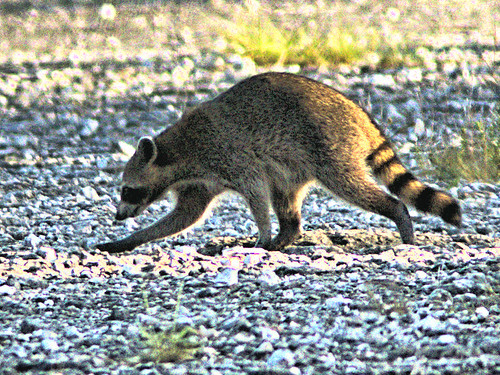
A feral boar appeared about a year ago. They can be dangerous and we try to avoid them:

Unusually wet conditions in the Everglades drive the White-tailed Deer onto high ground nearer to civilization. This is a magnificent eight-point buck:
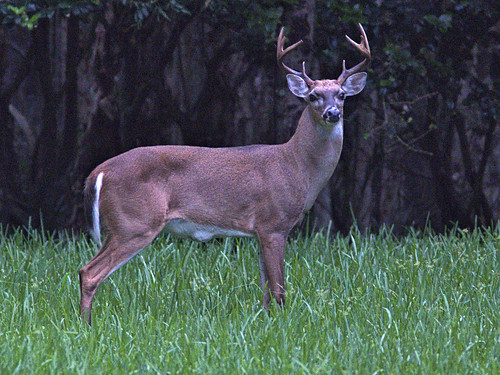
This is an earlier photo of a doe jumping over the guard rail of the unfinished roadway:

= = = = = = = = = = = = = = =
Linking to Misty's CAMERA CRITTERS,
Linking to Eileen's SATURDAY'S CRITTERS,
Linking to FENCES AROUND THE WORLD by Gosia
Linking to SKYWATCH FRIDAY by Yogi, Sylvia and Sandy
Linking to WEEKEND REFLECTIONS by James
Linking to BirdD'Pot by Anni
Linking to Wild Bird Wednesday by Stewart
Linking to Wordless Wednesday (on Tuesday) by NC Sue
Linking to ALL SEASONS by Jesh
________________________________________________
Please visit the links to all these memes to see some excellent photos on display
________________________________________________
The approach of Irma, the most powerful Atlantic hurricane in history, struck fear as she moved directly towards our south Florida home. During the previous week the weather had been normal for late summer.
The view of our local wetlands before sunrise while the storm was still far away:
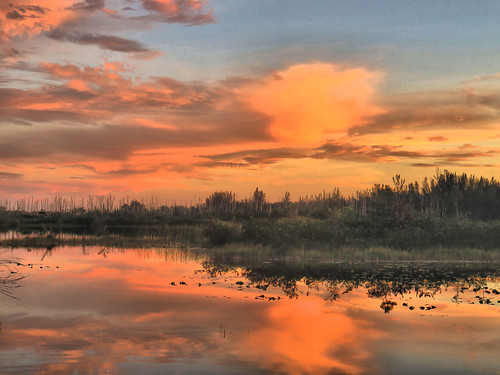
Fair skies in mid-morning:
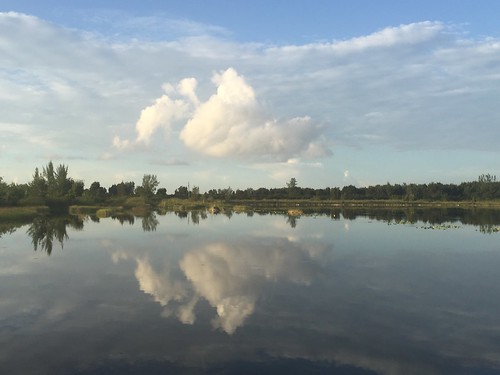
At first we planned to shutter our home and ride out the storm, windowless in the dark, as we are 8 feet above sea level and 18 miles inland. Our anxiety increased as we saw neighbors preparing to drive north or book flights out of state.
Earlier, the storm had been projected to hit on Friday, but we saw long lines at gas stations and grocery store shelves going bare. On Tuesday Mary Lou and I visited nearby Chapel Trail Nature Preserve and as we walked along the fenced boardwalk we spent more time discussing our options than looking for birds. The morning was clear and calm:

We suddenly decided to evacuate to someplace high and dry, so on Wednesday morning we flew to New Mexico. The only connecting flight available took us through Kansas City, and we arrived on Wednesday afternoon and occupied visitors' quarters at mile-high Kirtland Air Force Base.
The sun rose over the Manzanita Mountains east of Albuquerque:
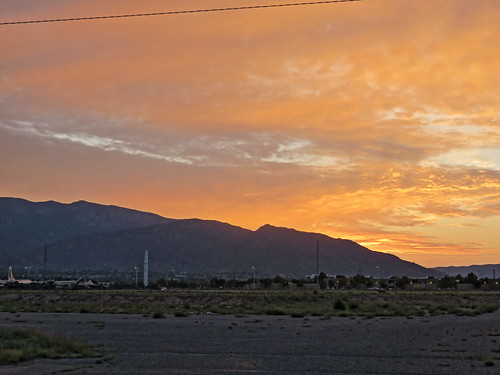
The next morning we observed the famous "Bird Log" at the Capulin Spring picnic area in Cibola National Forest in the Sandia Mountains. For me this was a homecoming of sorts, as in the early 1990s I had worked with a crew of US Forest Service volunteers to rehabilitate and restore water to an old hollow log which had served as a wildlife drinker.
The pipe from the spring had frozen and cracked and the stone wall which enclosed it had to be reassembled and cemented. The log had a large hole which we covered with a rubber sheet. (Les Hawkins was the volunteer who energized the rehabilitation of the log. Here is a 2002 article about him. Les celebrated his 100th birthday in 2014 but I have since lost contact with him.)
Until we moved from New Mexico to Florida in 2004, Mary Lou and I led weekly US Forest Service bird walks in the Sandia Mountains, often visiting this site. It became popular with birders from many countries.
This is the original log as it appeared in 2008:
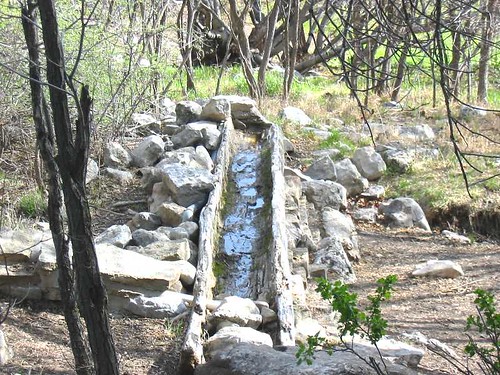
The old log finally fell apart and last year a new generation of volunteers used chain saws to carve out a new log to replace the original. They did a great job and restored the flow of water.
Since this is the only constant water source in a large expanse of mountainous forest, one should expect to see just about every species of bird and mammal which inhabits this area.
The new Bird Log (click on photo and scroll right and left to see many more enlarged views of the log and its visitors):

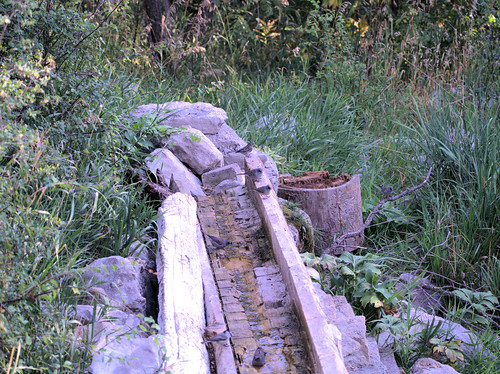
I left my DSLR behind and traveled with my new light weight mirrorless camera (Olympus E-M10 Mark II). The photos are mostly of poor quality, but they document the very engaging hours of just sitting and clicking as the show went on before our eyes. Among the avian visitors, nearly none of which I could expect to find in Florida were...
Western Tanager...
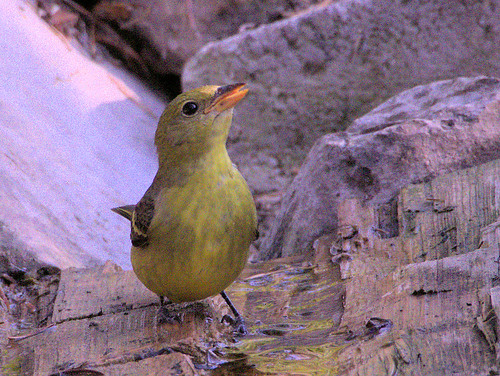
...photo-bombed by a Townsend's Warbler:
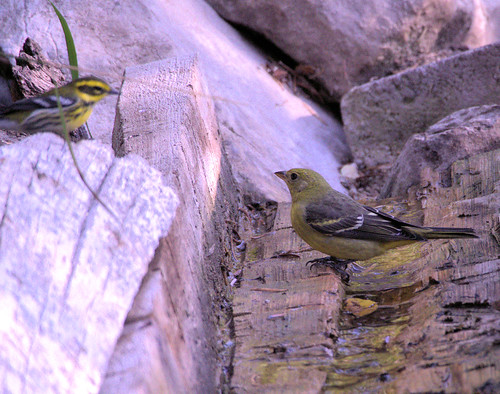
A (not much) better view of the Townsend's Warbler:
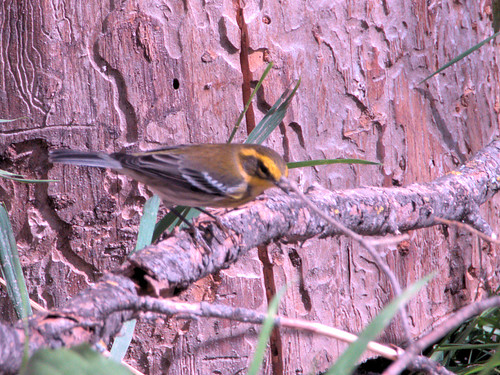
Mountain Chickadee:
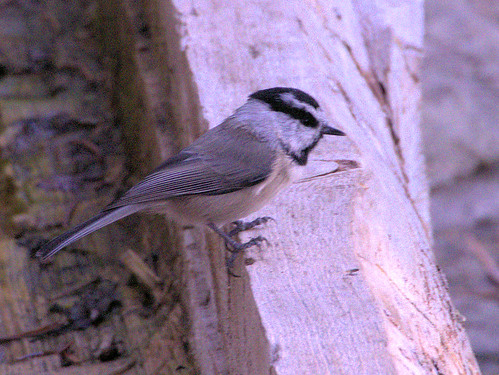
Hermit Thrush:

Green-tailed Towhee:
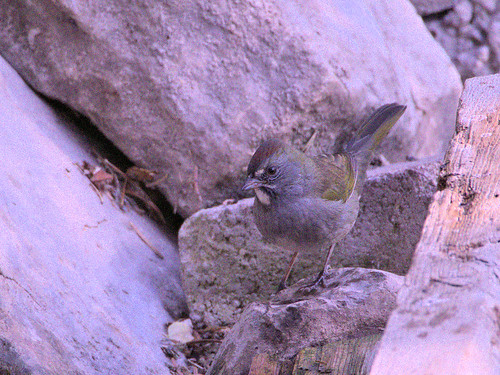
Cassin's Finch (male):
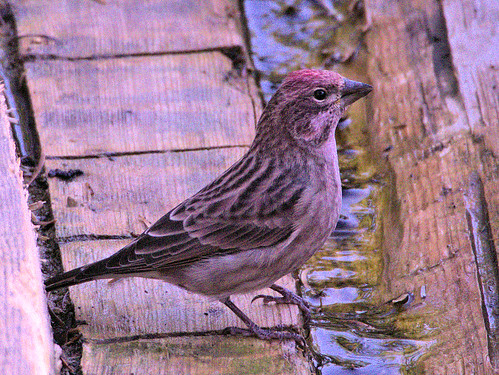
Cassin's Finch (female):
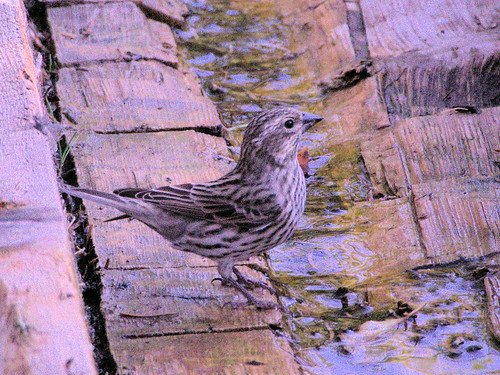
Plumbeous Vireo:

Western race of Orange-crowned Warbler, more colorful than the drab Tiaga subspecies which visits south Florida in winter:
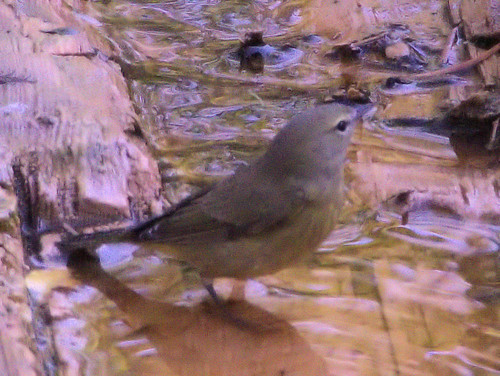
Enjoying a bath in "The Bird Log:"
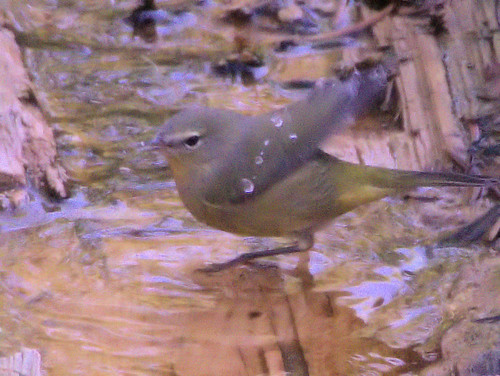
Audubon subspecies of Yellow-rumped Warbler. It has a yellow throat in contrast to the white throat of the eastern Myrtle subspecies which migrates into Florida:
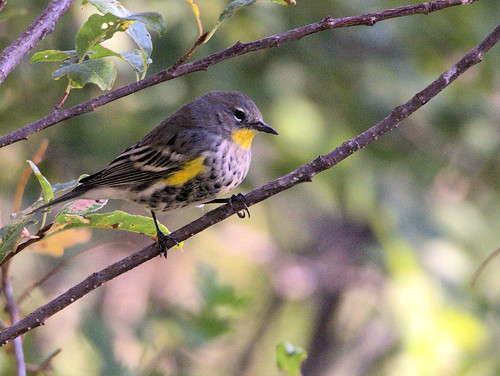
Wilson's Warbler:

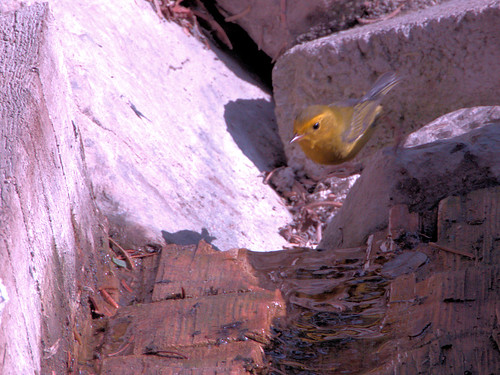
Spotted Towhee:

A Chipmunk:

A Mule Deer doe crashed the party but fled when she sensed my presence:

The hurricane arrived on Saturday, a bit late, and had major impact on the west (Gulf) coast of Florida rather than delivering the predicted direct hit on our neighborhood. It was so large that major damaging effects were felt over the entire Florida peninsula as it moved northward.
We flew back on Tuesday to a home which had gone without electricity for 48 hours, but power was restored during our flight. The house suffered no structural damage, although tree limbs and palm lfronds cluttered our yard. Thanks, not only to Irma's decision to veer off to the west coast, but also to so many of you who expressed concern and good wishes. As it turned out, the storm forced us into an unexpected and very pleasant vacation!
= = = = = = = = = = = = = = =
Linking to Misty's CAMERA CRITTERS,
Linking to Eileen's SATURDAY'S CRITTERS,
Linking to FENCES AROUND THE WORLD by Gosia
Linking to SKYWATCH FRIDAY by Yogi, Sylvia and Sandy
Linking to WEEKEND REFLECTIONS by James
Linking to BirdD'Pot by Anni
Linking to Wild Bird Wednesday by Stewart
Linking to Wordless Wednesday (on Tuesday) by NC Sue
Linking to ALL SEASONS by Jesh
________________________________________________
Please visit the links to all these memes to see some excellent photos on display
________________________________________________

























































